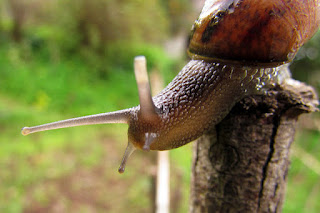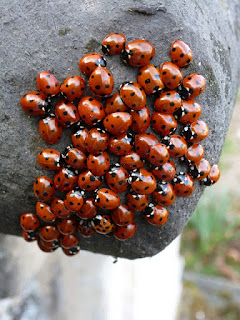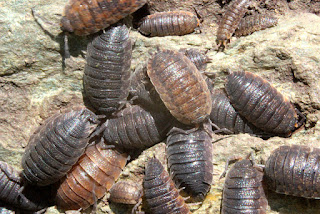As I sit in my home office watching the autumn rains and winds strip the last remaining colourful leaves off the trees outside, I find myself in awe of the tree. There’s a primary school across the street from my house and there are several huge beautiful chestnuts in its grounds where I watched the children shelter from the sun on hot days. There’s also the spindliest little apple tree that one could imagine, which despite its size produced at least a dozen enormous apples this year!
Trees affect every aspect of our lives – they provide food, timber, pulp and fibre, but beyond this they have important ecosystem functions in the natural landscape. Trees help to regulate our climate, they store and sequester carbon (about 30% of global CO2 emissions are absorbed by forests), they store water helping to prevent floods, they purify water and they provide habitat.
However, widespread pests and diseases have taken their toll on natural forests over the past century with outbreaks seemingly becoming more frequent and widespread in recent years. There has been considerable focus on the devastating effects of these outbreaks on trees with large economic value – orchards and timber plantations for example – but what are the consequences of the widespread death of our forests in terms of ecosystem services?
 |
| Oak in its autumn colours. |
A review published recently in the journal
Science considers this exact issue. UK researchers from the Universities of
St. Andrews,
Cambridge and
Oxford reviewed the consequences of tree pests and diseases on ecosystem services around the globe. The authors concluded that our current approaches to pest and disease management do not take into account the ecosystem services or the beneficiaries of these services provided by forests and that new approaches are needed, particularly as the likelihood of pest and disease outbreaks increases as a result of global climate change and globalisation.
Who’s attacking our forests?
Trees are attacked by any number of pests and diseases, including bacteria, viruses, invertebrates, water molds and fungi. The effects of these pathogens may be compounded as well; trees that have been defoliated by insects may be more vulnerable to disease.
Millions of years of co-evolution have generally allowed trees to build up natural defenses to the pathogens they encounter in their native environments. However, the introduction of species or the movement of species outside their historical ranges has opened up a whole new world of pathogens that have been the cause of the most devastating attacks on our global forests in the last 200 years.
The American chestnut (
Castanea dentata) was devastated by chestnut blight – a fungus accidentally introduced to eastern North American forests around 1900. In the early 20
thcentury,
over a quarter of the trees across approximately 200 million acres of eastern hardwood forests were American chestnuts, but by 1993 its frequency had declined to 0.5%. Today the tree is effectively extinct as very few mature trees are producing nuts.
Dutch elm disease – another fungal pathogen, which is transmitted by bark beetles – is familiar both in North America and Europe as it has eliminated mature elms (Ulmus spp.) from much of the landscape. Now there is concern that ash (Fraxinus excelsior) could suffer the same fate due to another fungal pathogen (Chalara fraxinea), which has been killing trees in Poland since the 1990s. Scientists are monitoring its spread to the rest of Europe.
 |
The devastation wreaked on a Canadian forest by the
mountain pine beetle. Credit: D. Huber, Simon Fraser University
Public Affairs and Media Relations (Flickr CC). |
As a Canadian I would be remiss if I didn’t also mention the devastating effects of the mountain pine beetle (Dendroctonus ponderosae). It has already killed several million hectares of pine species in Canada and the US and they expect over 37 million hectares of forest to be affected in British Columbia alone before 2020.
Of course, with globalisation and the widespread movement of plants and plant products around the world, the frequency and spread of pests and disease is only likely to increase. Climate change will also improve conditions for pests and disease as milder conditions in some areas may let some pathogens increase their natural range, or may permit pest populations to explode in numbers.
Attack of the Frankenfungus
When pathogens move around the globe they are not only introduced to new hosts and plant prey, they can also escape the natural predators and diseases that keep their populations under control.
This global movement also exposes pathogens to new genes that can make them even more virulent. For example, when the fungus that causes Dutch elm disease, Ophiostoma novo-ulmi, spread across the northern hemisphere, it hybridised with a native fungus species (O. ulmi) and acquired some new genes that decreased the elm’s ability to resist infection.
What does the loss of dominant tree species mean for our forests?
Widespread loss of a dominant tree species can have devastating effects far beyond any economic value they may have had. A wide range of ecosystem services will initially be harmed, such as retention and purification of water, wildlife habitat and carbon storage. Large stands of dead trees also become fuel for wildfires, which are far less specific about their victims and further alter the ecosystem.
However, inevitably the lost trees are replaced by new species and as this natural succession occurs some of the ecosystem services will be restored – carbon storage and water purification, for example. Unfortunately, other ecosystem services may never be restored. New tree species will create different habitats altering the biodiversity.
Some ecosystems are particularly vulnerable as they are dominated by a species that plays a critical role in maintaining the structure of that ecological community – known as a keystone species. Boreal forest (or taiga) is an excellent example of this. The conifers that dominate the northern latitudes of boreal regions are adapted to short growing seasons, recurring disturbance from storms, fire and floods, and growing in peatlands. Loss of any species in these regions would have a significant impact on the ecosystem structure.
Climate change packs a one-two punch for forests
Not only does climate change have the potential to increase the numbers and range of pests and disease, it can also make forests more susceptible to these infestations. Though the future is uncertain, predicted increases in extreme weather events – droughts, floods, cyclones, and extreme temperature fluctuations – are likely to put our forests under severe stress, increasing their vulnerability.
Of course, some pests may also be hindered by climate change. For instance, species that rely on an insulating blanket of snow to overwinter may be more vulnerable if snow cover is reduced in a milder climate scenario.
What is the future of our forests?
Nobody knows the answer to this question. However, the UK authors of the Science paper bring to light the need to do more fundamental research in understanding how pathogens affect natural forest communities. To date, most research has focussed on economically important species, yet the ecological role of forests and the ecosystem services they provide have considerable value also.
The long life span of trees has been a barrier to understanding some aspects of the infection and spread of some pathogens; the time it takes for some trees to reach a reproductive stage could outlive the careers of some scientists. However, new methods in molecular biology are overcoming these barriers these days. Understanding the process behind these pathogens will help in the prediction of their spread as well as how they may respond to climate change.
The authors also call for better management approaches that identify different classes of threat, which are defined by (i) the type of disease-causing agent (e.g. fungus, bacteria, insect), (ii) how it moves (e.g. wind, water, animal, wood imports) and (iii) the type of ecosystem service threatened (e.g. keystone species, timber value).
Management practices can also help build resilience in our forests. For example, practices that help preserve the genetic diversity of species and avoid monoculture will provide the genetic foundation that will help species resist disease. Steps to mitigate climate change may help reduce the abiotic stress on forests and reduce the expansion of pest populations.
Though there remain many unknowns and the future is uncertain, the critical role forests play globally is clear. So, if you are able, get out into a local wood or forest today and appreciate it. Those trees are cleaning the air we breathe and the water we drink. They grew that apple you brought along for a snack! They’re doing a lot as they stand there, so appreciate it…dare I even say…hug a tree?! Who knows, you might start a trend?!
The original paper is: Boyd IL, Freer-Smith PH, Gilligan CA, Godfray HCJ. (2013) The consequence of tree pests and disease for ecosystem services. Science, 342 (6160): doi 10.1126/science.1235773
The AAAS press release associated with the paper can be found
here.















